Great Moments

BERLIN CELEBRATES ATHLETICS
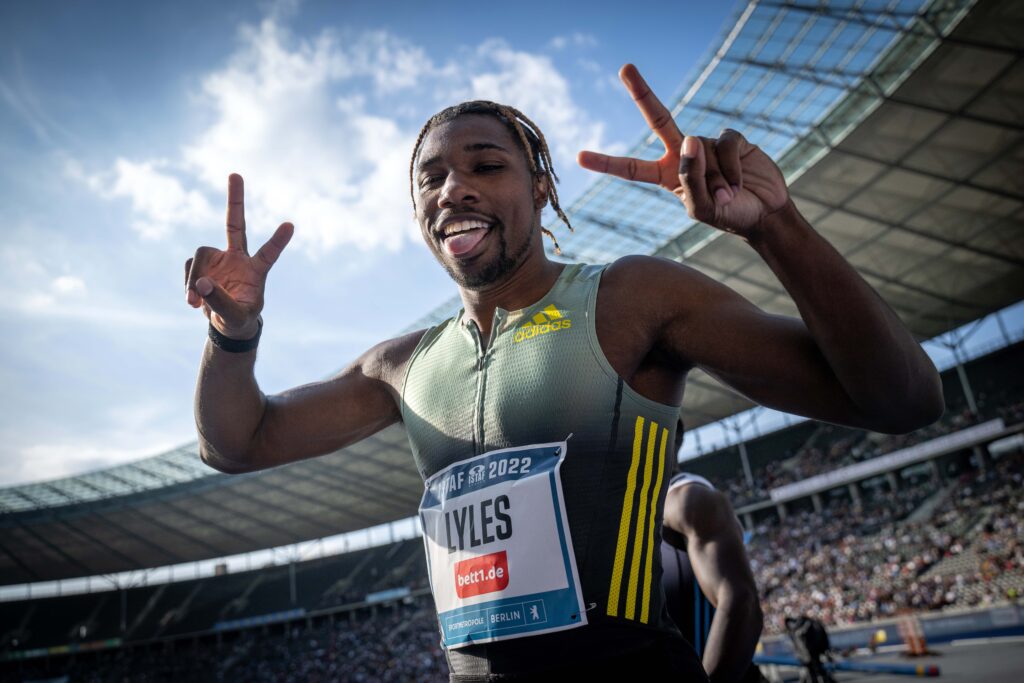
37,000 fans celebrated a joyful and emotional athletics festival with the athletes at the ISTAF 2022 in Berlin’s Olympic Stadium. On the home stretch of this special athletics season, the top athletes shone with a series of top performances – among others, the fans cheered victories by crowd favorite Malaika Mihambo, world track and field athlete Karsten Warholm, Noah Lyles and Valerie Allman, who once again lifted the discus over the 70-meter mark at her “all-time favorite meeting”. There were also historic events in the para shot put and in the “ISTAF Fanzone”
100 years ISTAF
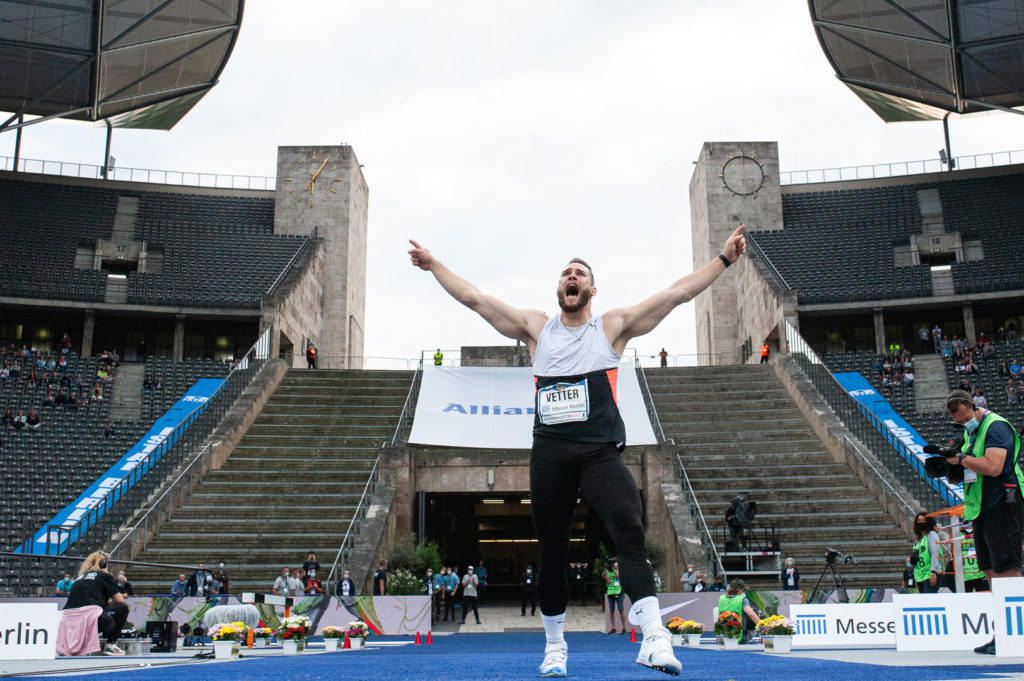
Athletics is this beautiful! More than 20,000 fans and world-class athletes celebrate the 100th ISTAF birthday in Berlin’s Olympic Stadium – a lavish celebration with great emotions and strong performances at the end of the athletics year. Two stars achieve historic feats: Olympic discus champion Valarie Allman throws the discus farther than any woman before her in the 100-year history of the ISTAF. And crowd favorite Johannes Vetter becomes the first javelin thrower ever to celebrate his fifth ISTAF victory.
ISTAF in the pandemic
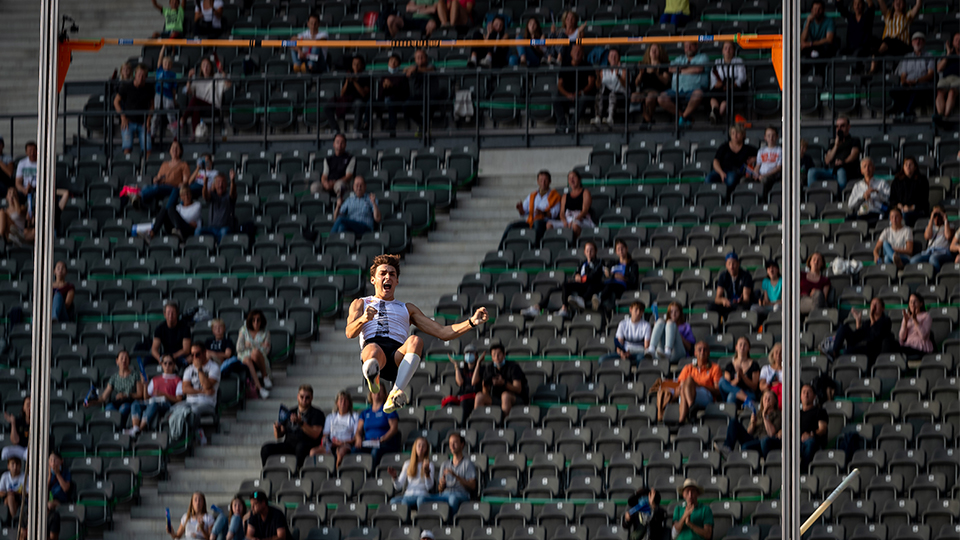
Corona determines everyday life in 2020. “5,000 people present at the same time” are allowed to be there on September 13 in Berlin’s Olympic Stadium. And all of them can be seen how much they had longed for the ISTAF. The oldest track and field meeting in the world is one of the first major sporting events where fans are once again allowed into the stadium thanks to a detailed hygiene concept. The world-class athletes shine with spectacular performances, the ISTAF staff, service providers and helpers are committed to ensuring that everything runs smoothly, and the 3,500 fans go “Bambule” like 50,000. Everyone celebrates an extraordinary athletics party together. Exuberant, cheerful, with goose bumps – and with distance.
Gesa Krause storms to World Record
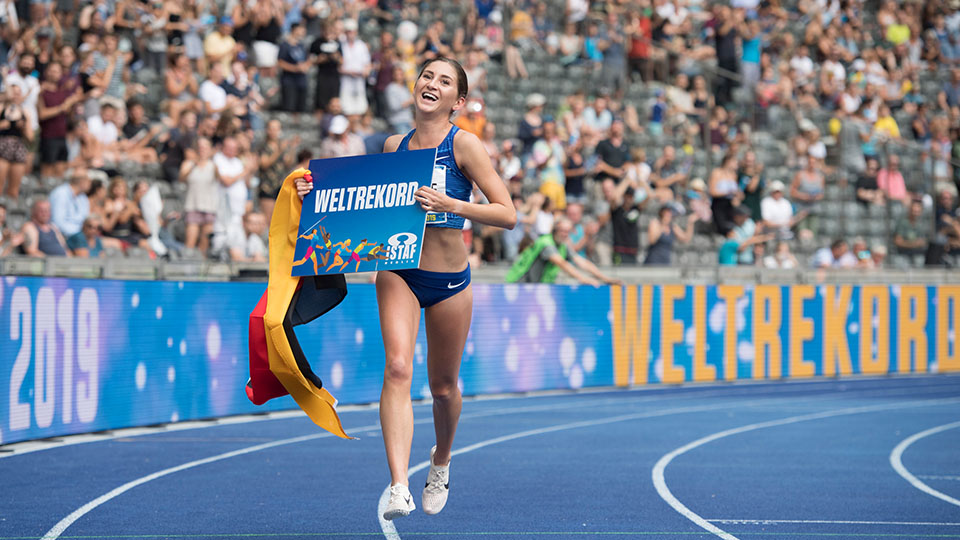
With eyes popping and skin turned to goose bumps, 40,500 fans urged Gesa Krause on for the last lap of the women’s steeplechase – and after crossing the finish line the German went to complete the fastest lap of honour ever in the history of ISTAF. She had just made history, improving not only her own national record for the 2,000m steeplechase but gone faster than any woman in history, setting a world record in 5:52.80!
Emotional Farewell from Robert Harting
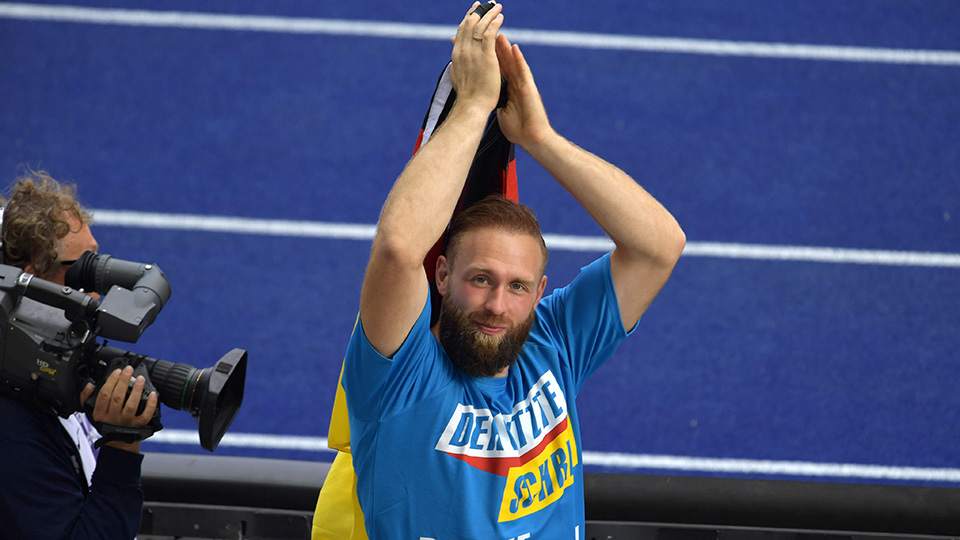
More than once discus idol Robert Harting had to wipe away a tear during his final appearance “in his sitting room”, as the Olympic Stadium had become known for the Berlin ace. The entire stadium gave the Olympic champion and his fellow competitors in the discus a standing ovation for minutes on end as they went on a lap of honour accompanied by tumultuous applause from the ISTAF fans. “Saying goodbye here at ISTAF was a breathtaking experience,” said Robert Harting. “I felt there and then that I wanted to keep going and compete. But it’s best to stop at the top.”
Great Stage for Stars and Fans
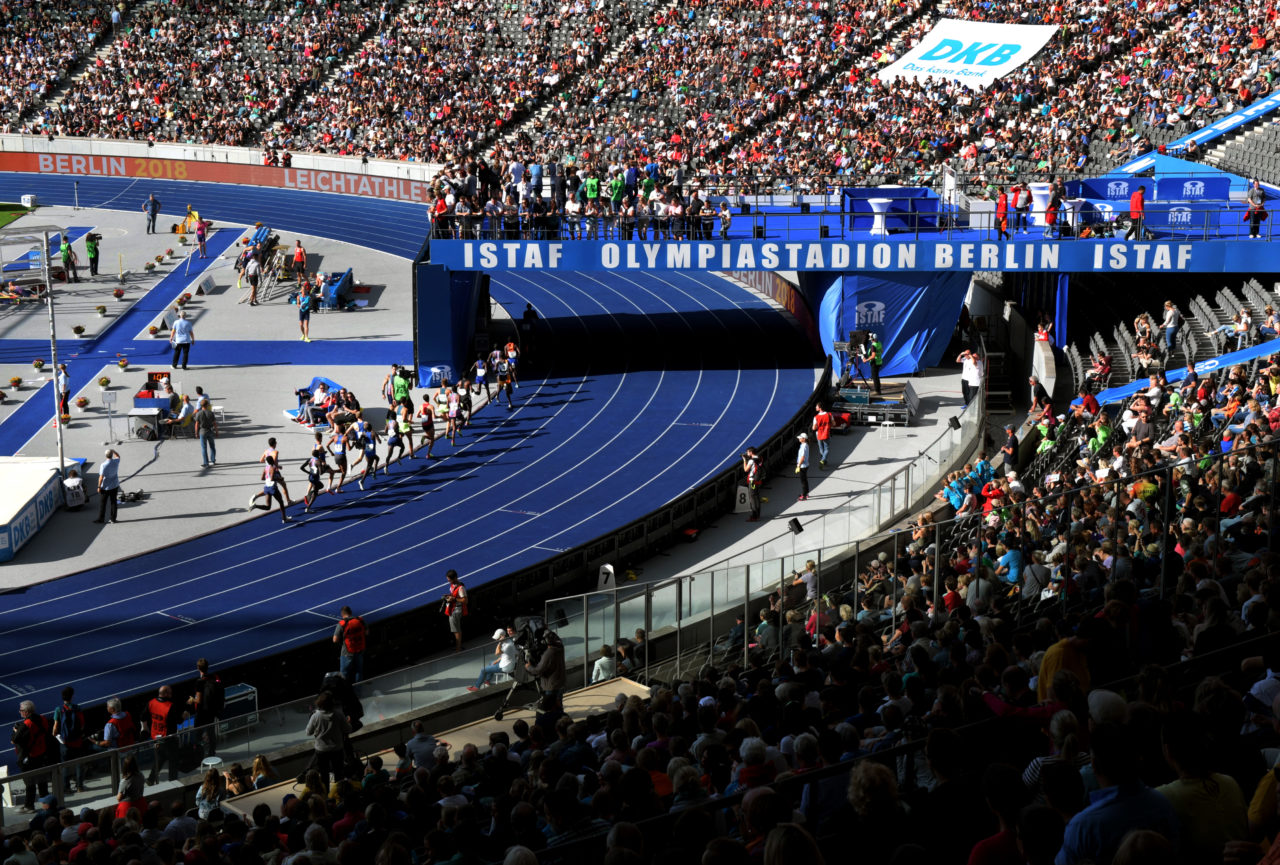
A sight never seen before in Berlin’s Olympic Stadium at the 76th ISTAF on August 27, 2017: world-class athletes having to run through a tunnel. The meeting organizers installed a grandstand for fans about 250m square in diameter spanning the famous blue track just beyond the finish line. This made contact between fans and athletes much easier and was another ISTAF innovation which drew widespread attention.
Great Throwing at the 73rd ISTAF

45,000 fans in the Olympic Stadium carried their discus idol Robert Harting on the crest of a wave to a home win at the 73rd ISTAF. But the hammer blow at the meeting came in the aptly named event when Poland’s Anita Wlodarczyk threw the four kilogramme implement 79.58m to take the world record from her German rival Betty Heidler.
World Record once again: Rudisha with World Best Number 15 in ISTAF History

This year the Kenyan David Rudisha ran a world record in the 800m at ISTAF. The 21-year-old’s 1:41.09 bettered by two-hundredths-of-a-second the time of the Kenyan-born Dane Wilson Kipketer which had stood for 13 years. Rudisha had already won the World junior title at the distance in 2006 and would go on to break his own world record in winning the first of two Olympic golds in London in 2012, retaining the 800 title in Rio four years later and also win the World championship twice. It was a day of triumph for Kenya in the men’s 800m as Boaz Lalang and Abraham Kiplagat completed the podium clean sweep in the meeting’s 69th edition.
Record Attendance for the 70th DKB ISTAF

Only in its debut year of 1937 had more spectators – 85,000 -attended the meeting in Berlin’s Olympic Stadium than in the record year of 2007. More than 70,000 fans came from all over Germany to the capital. A big part of this record attendance was thanks to the title sponsors the Deutsche Kreditbank (DKB) who chartered 800 buses and sold tickets including travel at cost price.
First Time in Jahn Sport Arena
The 2002 edition of ISTAF was moved to the Friedrich Ludwig Jahn arena because of renovation being carried out in the Olympic Stadium. Among the action seen by 20,000 fans were 100m wins by Marion Jones in 11.01 and Britain’s Dwain Chambers in 10.02 as well as Boris Henry of Germany winning the men’s javelin with 85.82m.
Meeting Records by American Stars
ISTAF on September 1 was the last great trial of strength before the Olympic Games in Sydney. 35,000 spectators acclaimed the stars, above all the still current meeting records of the Americans Marion Jones and Maurice Greene. Jones was unstoppable in running 10.78, the fastest in the world for the year while Greene ran 9.86 seconds – only seven-hundredths-of-a-second outside the world record.
62,000 see the unbeatable Michael Johnson in action
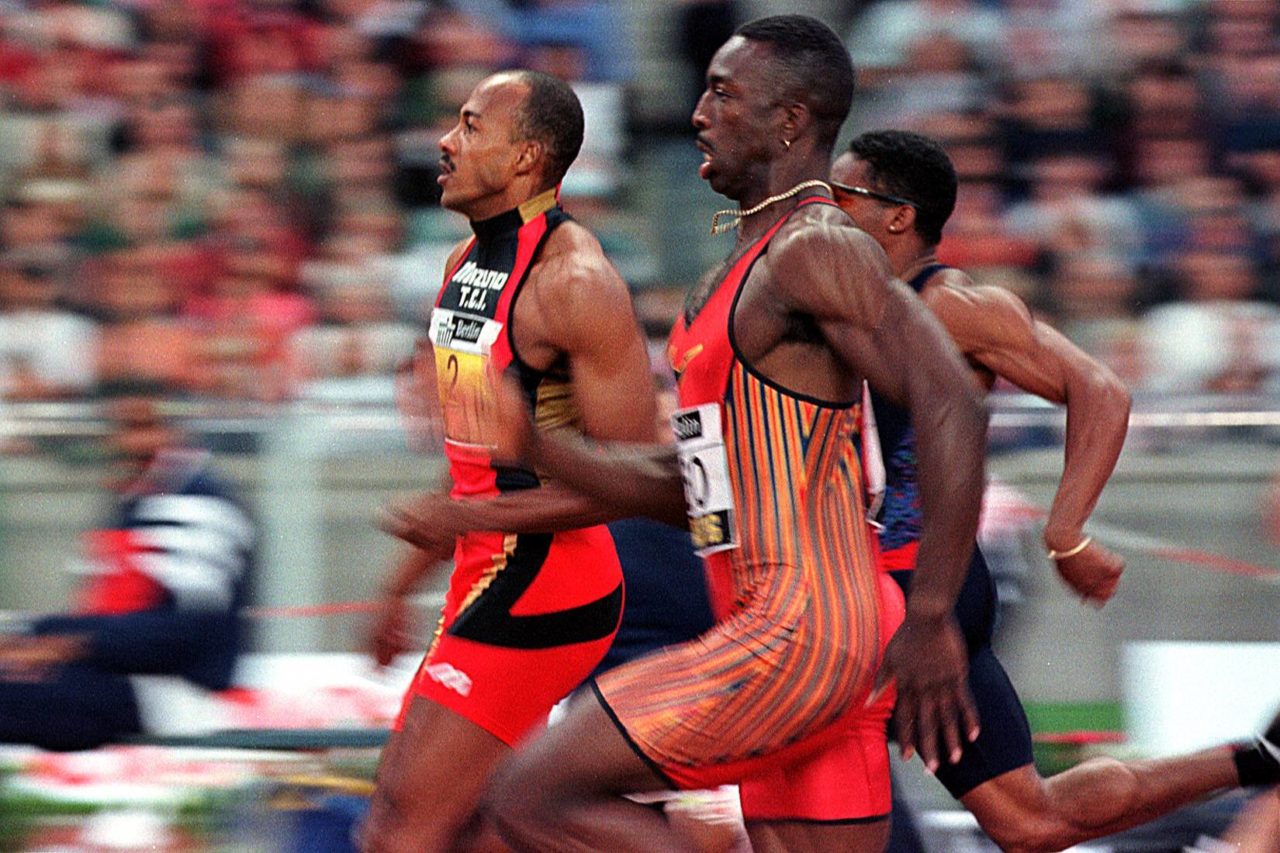
16 World champions from the global championships in Stuttgart that year competed at ISTAF on August 27, among them renowned winners such as Mike Powell, Merlene Ottey, Lars Riedel and Michael Johnson. The latter proved unbeatable both at the Stuttgart World Championships and in this edition of ISTAF in the 400m. The American’s dominance was to last for quite a few years to come.
After Re-Unification: Wachtel runs World Record
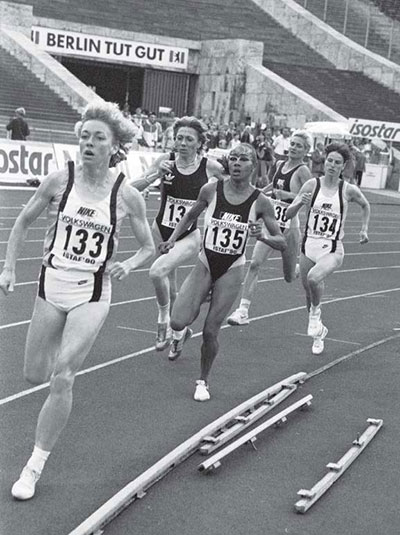
The first ISTAF after the fall of the Berlin Wall was the first in the meeting’s 50-year history to have a title sponsor. 32,000 fans attended the Volkswagen ISTAF and cheered on Christine Wachtel who won the 1,000m in 2:30.57 – a world record! Further cause for celebration was Heike Drechsler’s performance with the first 7m long jump in ISTAF history.
Mexican Fiesta: Arturo Barrios runs World Record
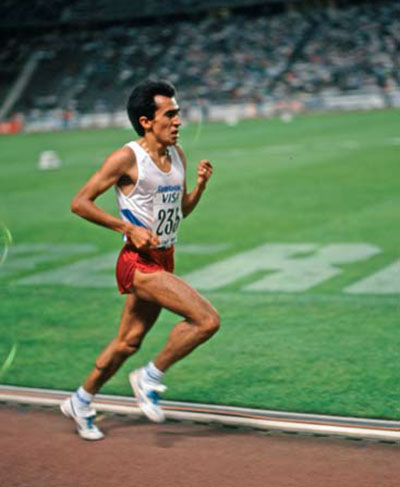
Arturo Barrios of Mexico provided ISTAF and 33,000 spectators with its 12th world record in a dazzling time on August 18, 1989. There had not been a 10,000m race at ISTAF since 1977 and his time of 27:08.23 was the first world record at the distance in the ISTAF meeting.
Anniversary with two West German and 10 ISTAF Records
The 50th anniversary edition of ISTAF anticipated the start of the World Championships in Rome eight days later. 40,000 fans were rewarded for attending with weather worthy of high summer on August 21, offering ideal conditions for track and field athletics. Among those making full use of the conditions was the new star of the 400, Harry “Butch” Reynolds, who ran a meeting record of 44.49 seconds as did West Germany’s Dieter Baumann who achieved his first international win in taking the 3,000m in 7:40.25. Baumann would go on to win the Olympic 5,000m title in Barcelona in 1992.
World Record at 1500m for the third Time in Olympic Stadium
At 8.13pm 45,000 spectators at ISTAF were beside themselves with excitement. Said Aouita of Morocco, based in Italy and the 5,000m Olympic champion in 1985 and world record holder for the distance with 13:00.40, deposed Britain’s Steve Cram as the world record man for 1500m in a magnificent race. Aouita ran 3:29.46, the fourth time the world record for the distance had been set in Berlin and third in the Olympic Stadium.
World Championships as Drawing Card: 56,000 spectators
The first ever World Championships in Helsinki whetted the appetite for live athletics. 56,000 fans poured into the Olympic Stadium on August 17 to experience at first hand the post-Olympic ISTAF. A veritable flood of World champions made their appearance in Berlin, above all Carl Lewis who improved his ISTAF record of the previous year by a hundredth-of-a-second to run 10.07, easing down across the line.
The “Ottey’s” and other Highlights
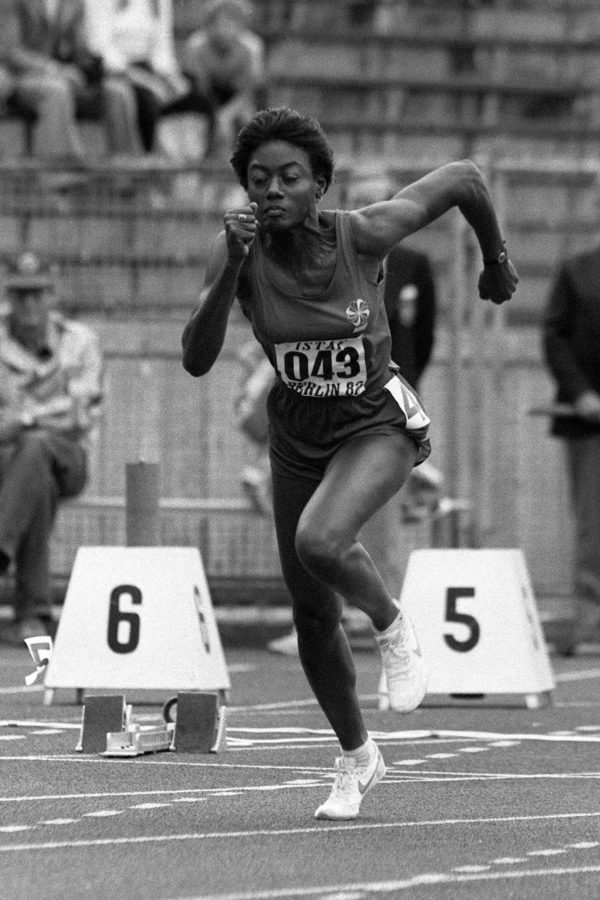
Milt Ottey of Canada equalled the ISTAF record in the men’s high jump with his winning height of 2.30m. His cousin Merlene, running for Jamaica and on course to become one of the most successful women sprinters in athletics history, impressed the 40,000 spectators with her victory in the 100m in 11.14. Ottey would win three world titles, three Olympic silvers and six Olympic bronze medals in her long career. Carl Lewis showed that he was right on track to become one of the sprint greats with his 100m win in 10.08, also an ISTAF record. One of Berlin’s home favourites, Willi Wülbeck, who would win the gold at the World Championships the following year, triumphed in the 800m.
Two short-lived World Records
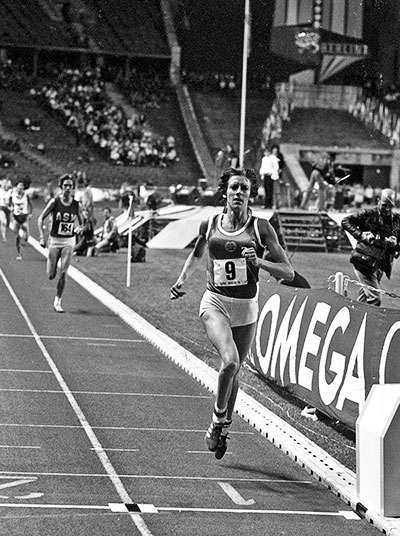
30,000 fans saw how delighted Poland’s Krystyna Kacperczyk was with her world record time of 55.44 seconds for the 400m hurdles. Ulrike Bruns of the GDR set the second record of the meeting, running 2:32.0 for 1,000m. The East German Bruns had won Olympic bronze over 1500m in Montreal two years previously. Within 48 hours both times were overhauled but that did nothing to detract from the world records in Berlin.
A Historic Moment
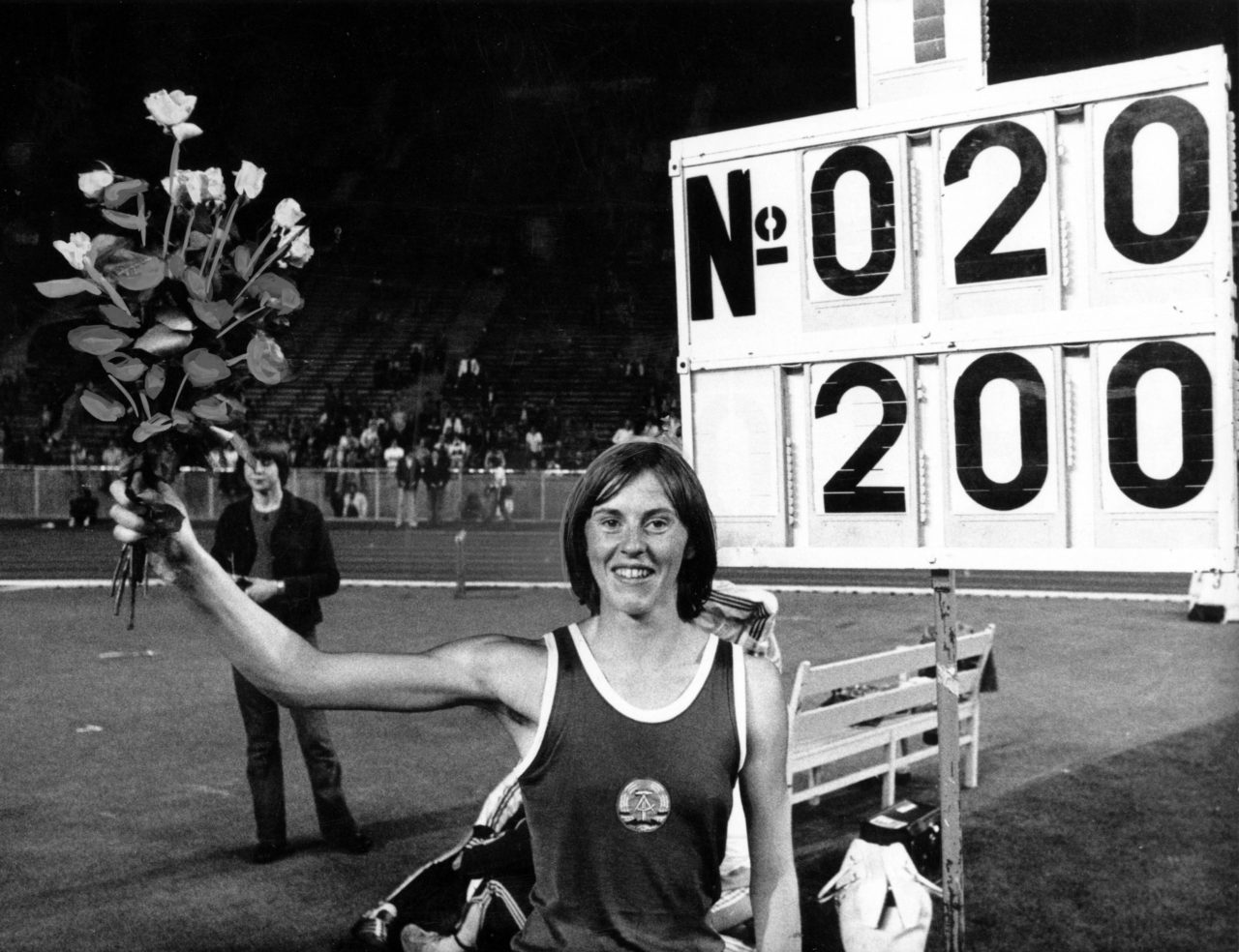
Rosemarie Ackermann, Olympic champion from Montreal for the GDR, set with her sixth jump a world record of 1.97m before achieving another world record with her seventh effort, becoming the first woman to jump over two metres. No-one suspected that the victory in the 400m hurdles on August 26 for the young Harald Schmid of West Germany against the Olympic champion Edwin Moses would be the last defeat suffered by the American until June 4, 1987, bringing to an end a sensational run of 119 consecutive wins.
Mike Boit’s great Day
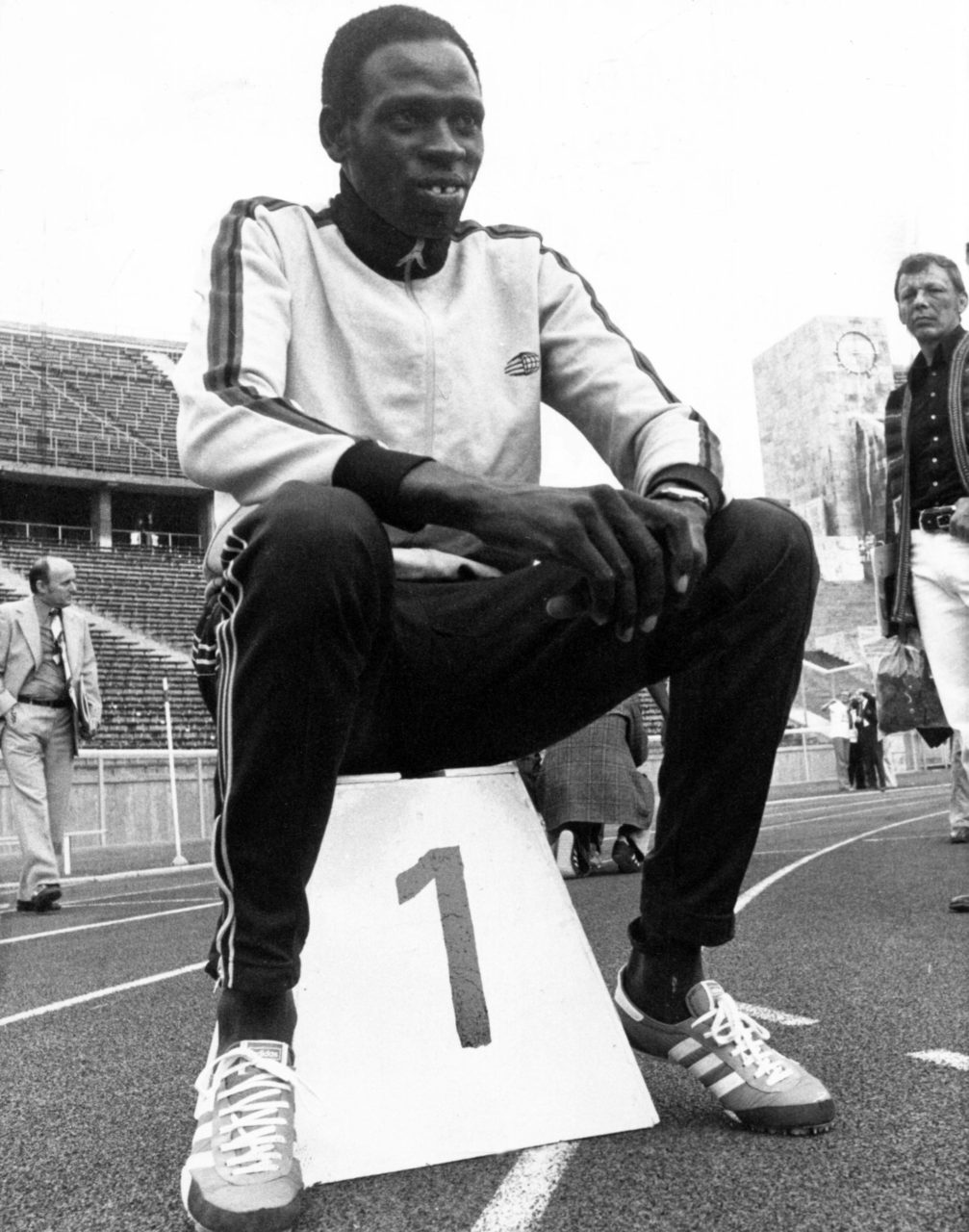
One of Kenya’s star middle distance runners, Mike Boit, arrived in Berlin with fire in his belly. Boit had had to miss the Olympic Games that year in Montreal because of a boycott by African nations in protest at the inclusion of apartheid-era South Africa. Boit had thus been unable to contest the 800m, won by Cuba’s Alberto Juantorena in a world record time of 1:43.50. At ISTAF on August 20 Boit wanted to show the 25,000 fans that he would have contested the race for gold all the way with the Cuban. He ran 1:43.47 to break the world record and prove to the world that Juantorena was not the undisputed ruler of the men’s 800m.
“Raining” World Records
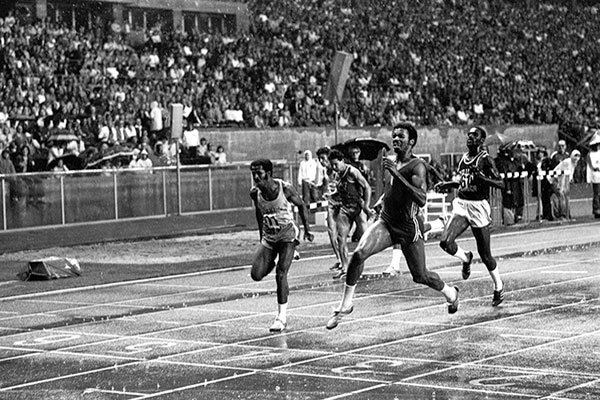
There are some events in sport which remain unforgettable. ISTAF on August 22, 1975 is among them. In pouring rain Steve Williams of the USA equalled the world record for the 100m with 9.9 seconds – hand timed since electronic timing had yet to be introduced. It was much the same for Guy Drut of France who delivered a thrilling duel with the American Charles Foster in the 110m hurdles. All three watches of the track officials as well as the back-up watch shown to the 20,000 spectators recorded 13.0 seconds, hand timed, also a world record.
New Beginning with many Highlights
The crisis came when no-one was expecting it and ISTAF vanished from the meetings calendar. To be more precise: plans were made but the events did not take place. The number of withdrawals increased which meant ultimately there was no alternative but to cancel ISTAF for 1972 and 1973. A new era also required a new approach to major sports events. 21,000 fans attended the reborn ISTAF on August 21.
World Record but not many Spectators to see it
The name of O’Brien was once on everyone’s lips. Who among athletics fans did not know the shot putter Parry, who set his stamp on an entire era? But for a world record to happen at ISTAF this time, it took another by the name of O’Brien. The 24-year-old Australian steeplechaser Kerry O’Brien, fourth in the 1968 Olympics in Mexico, seized his opportunity and set a world record of 8:22.0 for the 3,000m steeplechase in front of 7,000 fans in the Olympic Stadium on July 4.
The last Excursion indoors
Early on the organizers decided to hold the 1968 ISTAF after the Olympic Games in Mexico. That meant a change of venue from the Olympic Stadium to the indoor arena of the Deutschlandhalle. Five Olympic champions and six silver medallists were recruited for the meeting on November 17 but failed to produce a major performance before 5,000 spectators.
Almost drowned in the rain
Petrus, the God of Rain, did not look favourably on athletics. It rained on this particular July 11, as the British would say, “Cats and Dogs.” The heaven opened its floodgates in the morning and it poured constantly as ISTAF got underway in front of 9,000 spectators. In the circumstances it was a miracle that the pole vault was the only event to be cut short.
A great Athlete: Gaston Roelants
The Belgian steeplechaser Gaston Roelants was a well-known name internationally by this time, including for many of the 10,000 spectators at ISTAF. He completely dominated the race in the Olympic Stadium just as he did to an even greater degree at the Olympic Games in Tokyo, later in the season. At ISTAF he won in 8:33.2 and before winning the Olympic title in 8:30. At this time his world record for the event was 8:29.6.
Ethiopian Long Distance Aces
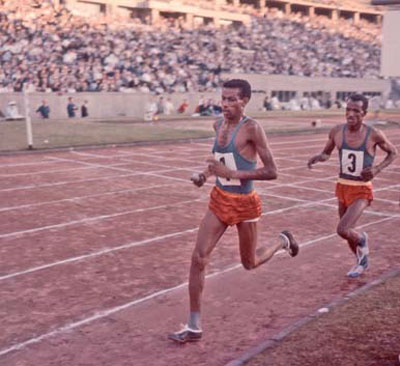
The organizers put out feelers worldwide for the 23rd edition of ISTAF which led to athletes from 17 countries taking part, a meeting record. Another landmark was the debut of African athletes at ISTAF where the star in the men’s 10,000m was Mamo Wolde who dominated the race to win in front of 12,000 spectators. Six years later the Ethiopian won the Olympic Marathon title, following in the footsteps of his compatriot Abebe Bikila who had won the previous two Olympic marathon golds for Ethiopia. For good measure Wolde also won the silver medal in the 10,000m in those same Olympic Games in Mexico in 1968.
Gala Show of two Sprint Monarchs
The sprint monarchs from Rome were also the stars of ISTAF following the Olympic Games. Armin Hary of Germany won the 100m in 10.2 seconds, continuing his victorious sequence from the Olympic final. But the number one attraction for the 40,000 spectators in the Olympic Stadium was the American Wilma Rudolph who had won both individual women’s sprints and the sprint relay in Rome.
Prospect of Rome Olympics casts a long Shadow
In the year before the Olympics the 20th edition of ISTAF produced a West German record in the women’s long jump by Gudrun Scheller who improved by one centimetre to 6.22m the mark set by Erika Fisch who had finished fourth in the 1956 Melbourne Olympics.
A Cloudburst and its Consequences
1958 turned out better than the previous year – only the weather didn’t. 15,000 spectators braved a cloudburst which descended just as the meeting began. This forced a delay to the schedule but only to minor degree because the cinder track of the Olympic Stadium was able to soak up much of the water.
“Only” Three ISTAF Records by Americans
The weather did not exactly look kindly upon ISTAF in post-Olympic year. In peak summer temperatures of 37 degrees Centigrade in the shade, only 9,000 spectators found their way to the Olympic Stadium. Most Berliners preferred to visit a swimming pool on June 30 rather than attend ISTAF. The meeting record performances came from an American trio: Leamon King, already co-holder of the world record for 100m, ran 10.4 for the distance, Willie Stevens clocked 14.2 for the 110m hurdles and Richard “Rink” Babka threw 51.62m to win the discus. He would win the silver medal in the 1960 Olympics in Rome.
ISTAF’s biggest Record Haul so far
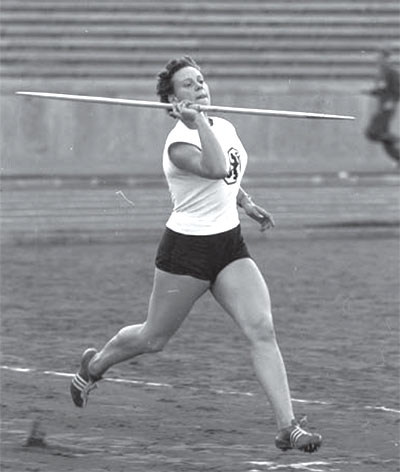
The highest quality ISTAF up to this date was on June 30, watched by 20,000 spectators in the Olympic Stadium. A total of eight records were set including one by Marianne Werner of Germany who had finished a surprise second in the Helsinki Olympics in 1952. Werner three 15.61m to win the women’s shot put. Gisela Köhler equalled the women’s 100m meeting best with 11.5 seconds and Inge Kilian cleared 1.65m in the high jump. Siegfried Hermann ran 7:59.0 to move to fifth on the world all-time list for 3,000m. Almut Brömmel joined the top elite of women’s javelin throwers with her throw of 50.73m.
Good Going by Gude in 5,000m
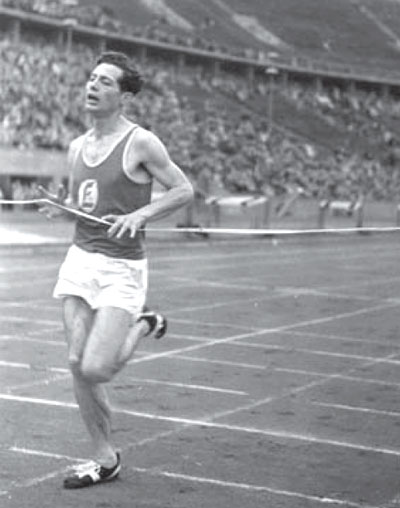
September 21, 1952. The second ISTAF in Olympic year attracted 15,000 spectators to the Olympic Stadium. The greatest cheers were for the German long distance runner Helmut Gude following his storming run in the 5,000m where he trailed Gordon Pirie by 50 metres before cutting back the lead to be right behind the Briton’s as the fans cheered him on, overhauling him at the start of the final lap to win in 14:16.0.
Helsinki makes it possible: the Americans are coming
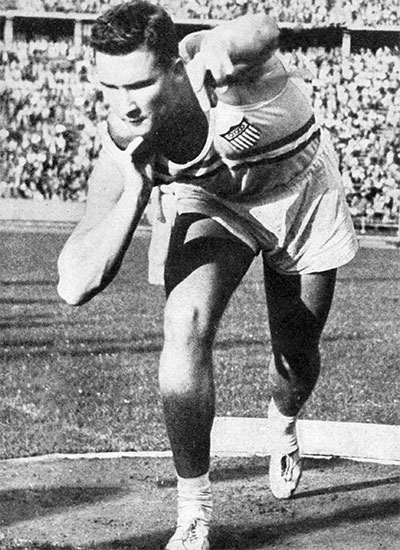
August 10, 1952. The Olympic Games in Helsinki made it possible for a good half dozen gold medallists to travel from Finland to Berlin. Most were from the USA and 40,000 spectators in Berlin’s Olympic Stadium saw Parry O’Brien, Olympic champion in 1952 and 1956, who had revolutionized the shot put with his technique. At ISTAF’s 11th edition O’Brien’s 16.69m was enough for victory and set an ISTAF meeting record, as was his winning throw of 50,57m in the discus.
A modest Beginning
Four years after the end of the war, ISTAF was back in business. The beginning on May 26, 1949 was understandably a modest one in front of 4,000 spectators in the Mommsen Stadium. It would still be a year before the German Athletics Federation (DLV) was permitted to become a member of the IAAF, the world-governing body for athletics. Berlin had become a divided city and German athletics was only in its initial stages.
Indoors for the first Time – Starting Blocks for the first Time
ISTAF’s second edition was on March 19, 198 and took place in the Deutschlandhalle. 5,000 spectators followed the indoor competition where starting blocks were available to runners for the first time – as recently as the 1936 Olympic Games in Berlin they had still been banned.
Two World Records and Long’s “Long” Record Jump
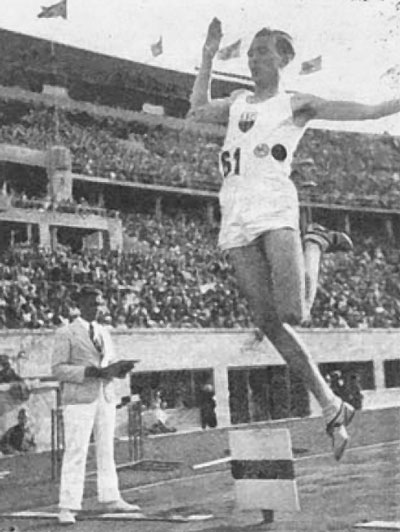
Athletes from eleven countries took part in the first edition of ISTAF, held on August 1, 1937. This was a record and so was the total of 85,000 spectators. Ludwig “Lutz” Long cleared 7.90 metres in the long jump – an ISTAF record which stood for 39 years as well as a European record for 19 of them. The very first world record at ISTAF was set in this same 1937 meeting by Stanislawa Walasiewicz of Poland, winner of the 100m Olympic title in 1932 and the silver medal in Berlin in 1936, who ran 11.6 seconds in the women’s 100m. The second world record came in the women’s 80m hurdles where the South African Barbara Burke ran 11.6 seconds.
Debut

The history of ISTAF began on July 3, 1921 when the Berlin Sport Club, Sport Club Charlottenberg and the Poseidon Swimming Club combined to stage in what was then Grunewald Stadium the first international between German and international athletes under the title of “International Stadium Festival.” 20,000 spectators experienced exciting competition which also included swimming events.




















